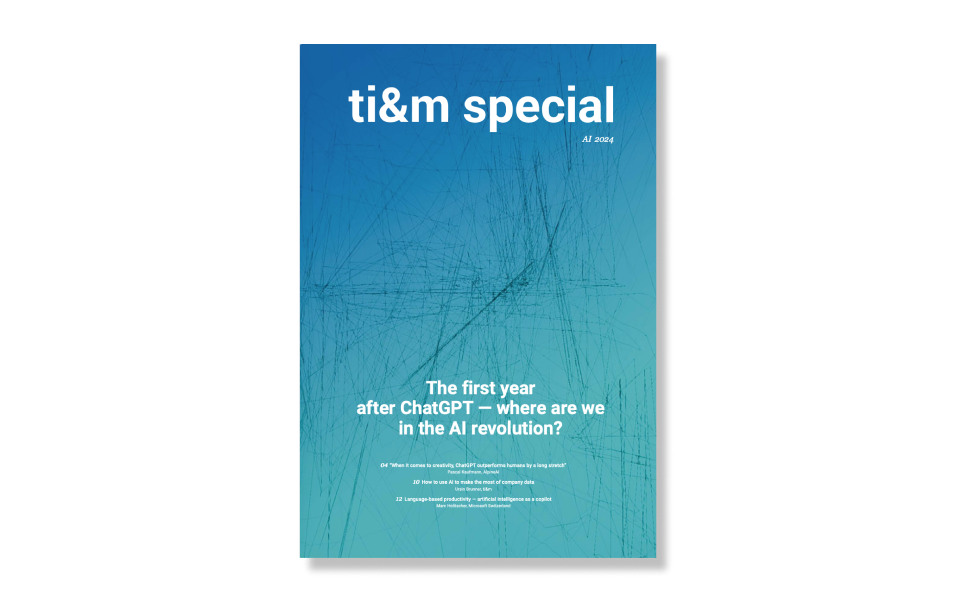The future of blockchain interoperability
Web 3.0 // Blockchains play a key role in the ongoing development and decentralization of the internet. With “the interchain”, the Interchain Foundation in Zug is establishing an ecosystem that simplifies interoperability between individual chains through standards, thus driving the development of Web 3.0.
The computer network ARPANET was developed in 1969 with funding from the US Department of Defense, resulting in the first practical version of the internet. “LO” was the first message to be transmitted node-by-node from one computer to another. Apparently it was supposed to say “Login” but an error meant that only the first two letters were sent. A few years later, scientists Robert Kahn and Vinton Cerf used the network protocol TCP/IP (Transmission Control Protocol/Internet Protocol) to set standards that regulated how data could be transferred between different networks.
The evolution of the internet
This basic protocol resulted in a decentralized ‘network of networks’, which later evolved into our current internet. The form we know today — the world wide web, or Web 1.0 — was invented by Tim Berners-Lee in 1981, giving users access to a growing number of static websites as ‘passive readers’. In the early 2000s, a second generation of web-based services brought human ingenuity and our need for social interaction into the digital sphere. And so Web 2.0 (the social web) was born. The success of Web 2.0 was also made possible by simultaneous developments in mobile technology, particularly in terms of connectivity. Today we’re on the brink of the web’s evolution into Web 3.0 — and a further decentralization of the internet. At the moment, Web 3.0 is only accepted and used by a small group of developers, IT engineers and crypto enthusiasts. Web 3.0 has facilitated significant progress in distributed systems, particularly in developing interoperability between blockchains.
Inter-blockchain communication
The Inter-Blockchain Communication Protocol (IBC) allows secure and permissionless communication between different blockchains. ‘Permissionless’ means that anyone can enter the network autonomously and create new data nodes without rights restrictions. IBC forms the connecting substrate for the decentralized future of the interchain, and is the cornerstone on which the whole structure is based. It simplifies interoperability between blockchains with different purposes, business models and design philosophies, and enables them to interact with one another while retaining their diversity. Connections to Avalanche and Near are currently in testing stages, and multiple integration paths with Ethereum are being explored right now. Blockchains that support IBC can exchange any kind of data with each other, in the same way that computers can send messages back and forth via TCP/IP. By activating the network effect between blockchains, the industry standard has ushered in a new era for the global blockchain, and became a catalyst for the Web 3.0 revolution. This is because the protocol allows the interchain to be as flexible, interoperable and scalable as it currently is.
The internet of blockchains — a vision
The Interchain Foundation (ICF) supports and develops the Interchain Stack, the shared technology that forms the basis of a large number of independent blockchains and related communities. The ICF believes that the community’s core values — sovereignty and interoperability — are the most realistic, practical and effective means of creating a sustainable and transparent blockchain system. To realize its vision of an internet of blockchains, the ICF is forging ahead with independent applications and blockchains that can interact with one another using IBC. By providing financing, software development, research, security measures and training, the ICF is fully committed to making its vision a reality. It is actively communicating with industry associations, thought leaders and development teams from outside the ecosystem to highlight and promote the numerous innovations in the interchain. Today over 100 chains and teams call this ecosystem home.
The future
Sovereign chains are achieving exceptional success, and IBC user numbers are growing steadily. The Inter-Blockchain Communication Protocol is the most important and formative asset within the interchain. Cosmos SDK chains include IBC support as standard, but implementing IBC in non-Cosmos SDK chains is currently a time-consuming process. Thanks to easily accessible workflows and additional options for advanced users, IBC data communication and usability can be increased substantially. Recently, an IBC connection linking the Polkadot and Kusama ecosystems was created to establish a secure model for cross-platform interoperability between different chains and ecosystems. Apart from the chains linked via IBC, numerous other blockchains have been developed using the core ecosystem technology — the Interchain Stack — including BNB Beacon Chain, Crypto.com, OKX Chain and BNB Greenfield. Since the interchain’s launch a few years ago, the ecosystem of blockchains connected via IBC has grown to more than 100 sovereign chains, enabling secure, trust minimized, cross-platform interoperability. For Web 3.0, this marks a new era of extended sovereign interoperability.







